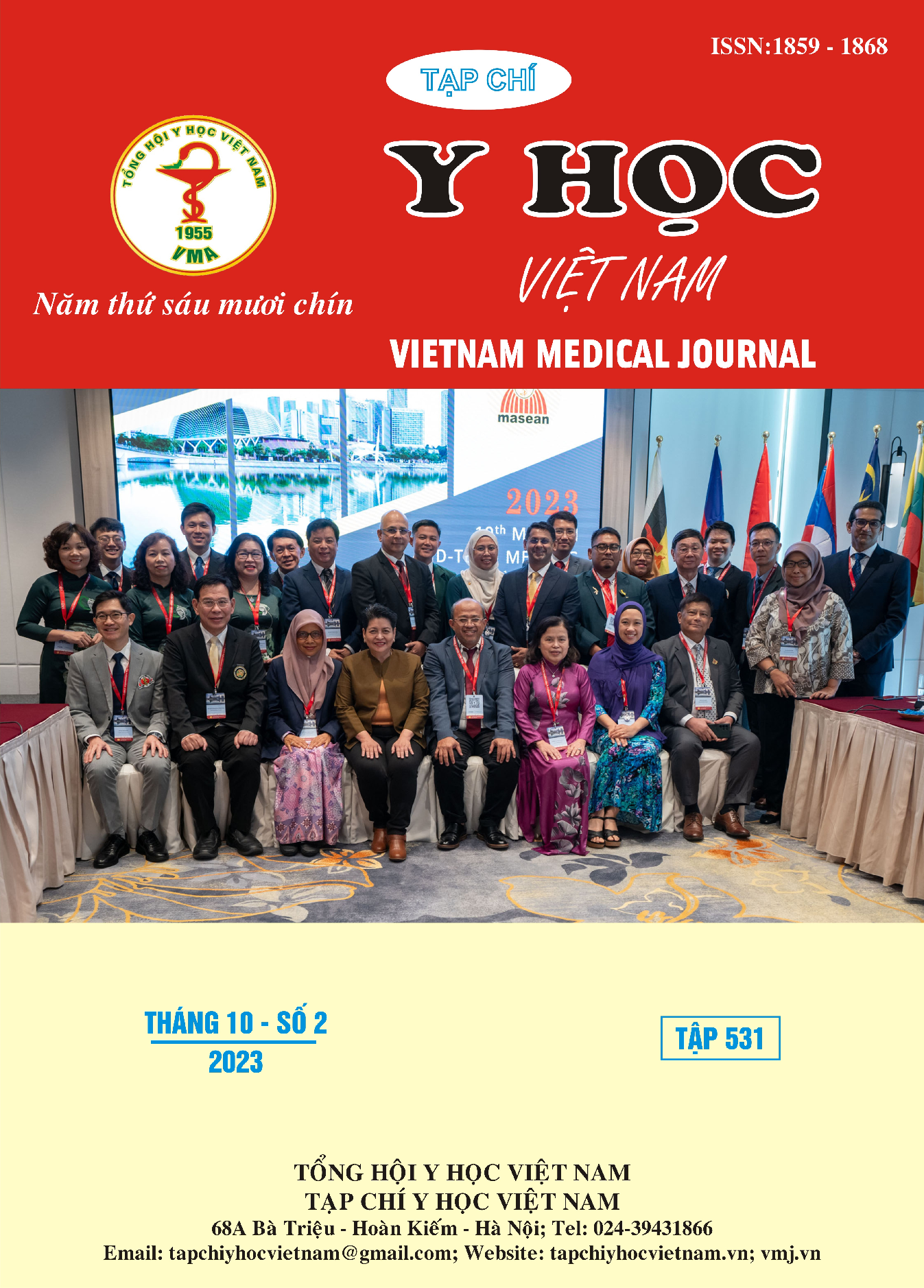THE ELEVATED BLOOD URIC ACID RATES, GOUT INCIDENCE, AND RELATED FACTORS IN ADULTS WERE INVESTIGATED AT THE FAMILY MEDICINE CLINIC, HO CHI MINH CITY UNIVERSITY MEDICAL CENTER
Main Article Content
Abstract
Elevated blood uric acid levels and Gout are associated with cardiovascular and renal diseases, with an increasing global and Vietnamese prevalence. Effective management and care for high blood uric acid and Gout are essential, especially in the early stages, as family physicians can play a vital role in controlling Gout and identifying other co-existing conditions. It is crucial to determine the prevalence of elevated blood uric acid and Gout and investigate the correlation between high blood uric acid levels and risk factors in Family Medicine Clinics (FMCs). A cross-sectional study was conducted on 235 adults (> 18 years old) attending a Family Medicine Clinic, Ho Chi Minh City University Medical Center, screening from 3 to 6/2021. Data were collected using questionnaires, laboratory test results, and information such as age, gender, and body mass index. The Bennett - Wood 1968 criteria (ARA 1977) were used for diagnosing Gout, as they were suitable for outpatient FMCs. The prevalence of elevated blood uric acid and Gout in adults attending the Family Medicine Clinic, Ho Chi Minh City University Medical Center, was 34.5% (43.6% in males and 26.4% in females) and 5.2% (9.1% in males and 1.6% in females), respectively. One-third of elevated blood uric acid cases were in the age group under 40. Factors associated with high blood uric acid levels included male gender, age over 60, and being in the obese BMI group. The proportion of diagnosed gout patients in the elevated blood uric acid group was 12.3%, indicating that not all patients with high serum uric acid levels had Gout, and vice versa (83.3% of gout patients had elevated blood uric acid levels). The public was more informed about Gout than elevated blood uric acid and its risks. Among adults attending the Family Medicine Clinic at Ho Chi Minh City University Medical Center, high blood uric acid prevalence was 34.5%, with one-third of cases in the under-40 age group. The detected gout prevalence in this study was 5.2%, with half of the patients being new diagnoses, and both conditions were more prevalent in males than females.
Article Details
Keywords
uricemia, gout, body mass index, hypercholesterolemia, hypertriglyceridemia, hyper creatininemia, family doctor
References
2. Uaratanawong, S., et al., Prevalence of hyperuricemia in Bangkok population. Clin Rheumatol, 2011. 30(7): p. pp. 887-93.
3. Quyền Đăng, T., Nghiên cứu nồng độ acid uric và một số yếu tố liên quan đến hội chứng tăng acid uric máu trong cán bộ quân đội, in Luận văn thạc sĩ Y học, Tuyên, Editor. 2001, Học Viện Quân Y: Học Viện Quân Y.
4. Trịnh Kiến, T. and H. Nguyễn Thị, Nghiên cứu mối liên quan giữa tăng acid uric máu với một số yếu tố nguy cơ tại Thành phố Cần Thơ. Tạp chí Y học Thành phố Hồ Chí Minh, 2014. 18 (5): p. tr. 220-224.
5. Nguyễn Vĩnh, N. and L. Nguyễn Thị Ngọc, Bệnh Gút, in Bệnh học Cơ Xương Khớp nội khoa, Ngọc, Editor. 2019, Nhà xuất bản Giáo dục Việt Nam: Vĩnh Phúc. p. tr. 187-210.
6. Phạm Thị, D., M. Lê Ngọc, and K. Phạm Ngọc, Tình trạng tăng acid uric huyết thanh, yếu tố liên quan và hiệu quả can thiệp chế độ ăn ở người 30 tuổi trở lên tại cộng đồng nông thôn Thái Bình, Dung, Editor. 2014, Viện Vệ sinh Dịch tễ Trung ương.
7. Liu, F., et al., Hyperuricemia and its association with adiposity and dyslipidemia in Northwest China: results from cardiovascular risk survey in Xinjiang (CRS 2008-2012). Lipids Health Dis, 2020. 19(1): p. pp. 58.
8. Yu, S., et al., Prevalence of hyperuricemia and its correlates in rural Northeast Chinese population: from lifestyle risk factors to metabolic comorbidities. Clin Rheumatol, 2016. 35(5): p. pp. 1207-15.
9. Chen-Xu, M., et al., Contemporary Prevalence of Gout and Hyperuricemia in the United States and Decadal Trends: The National Health and Nutrition Examination Survey, 2007-2016. Arthritis Rheumatol, 2019. 71(6): p. pp. 991-999.
10. Dehlin, M., L. Jacobsson, and E. Roddy, Global epidemiology of gout: prevalence, incidence, treatment patterns and risk factors. Nat Rev Rheumatol, 2020. 16(7): p. pp. 380-390.


